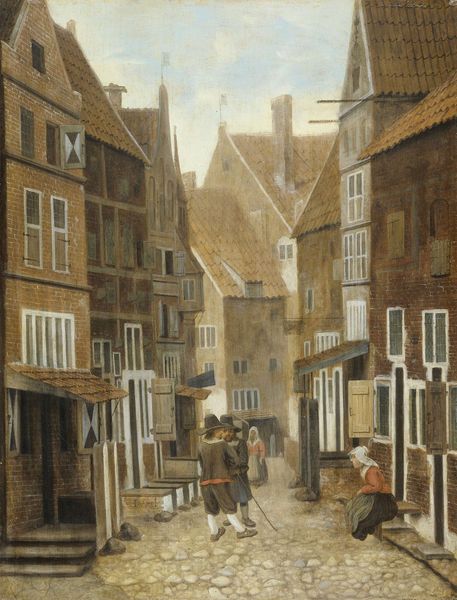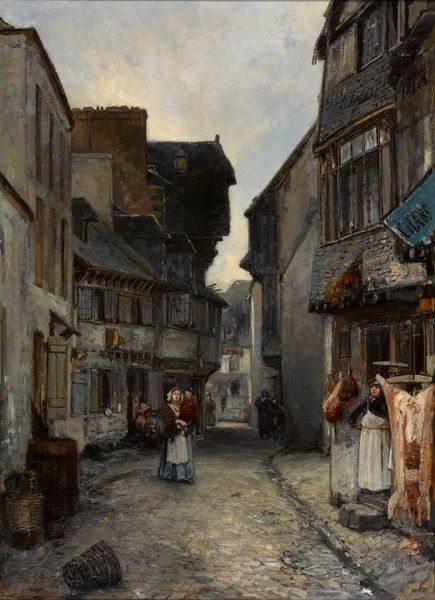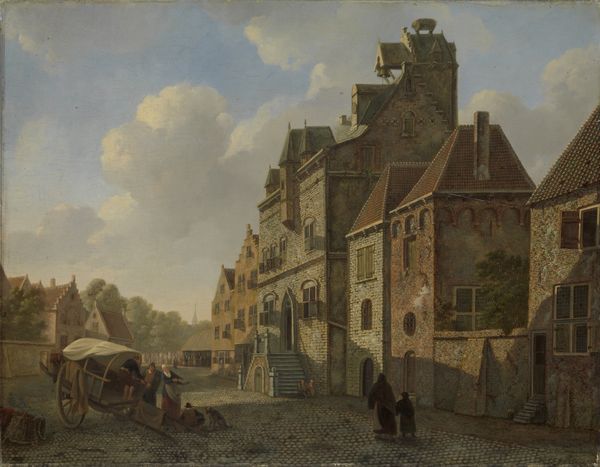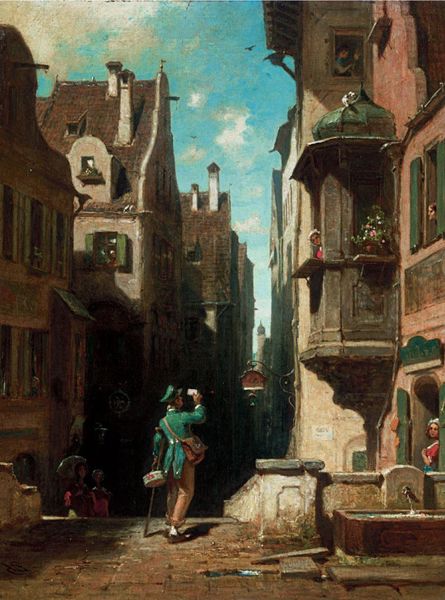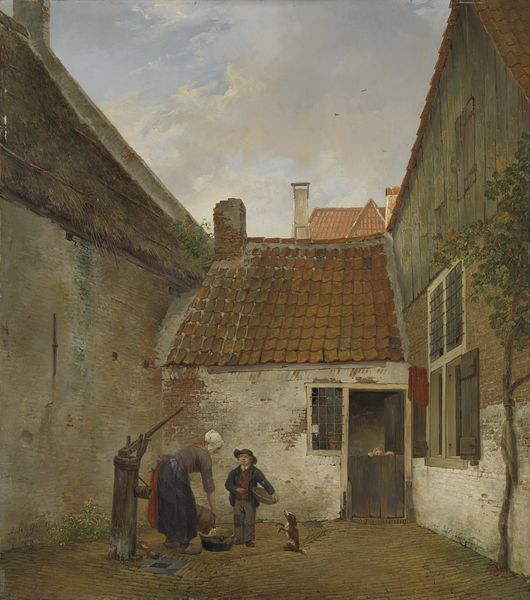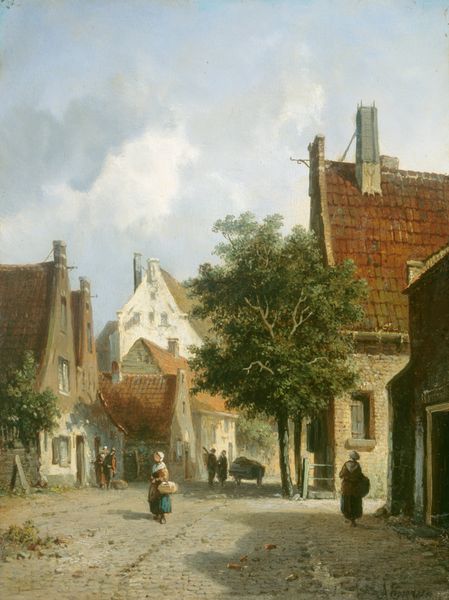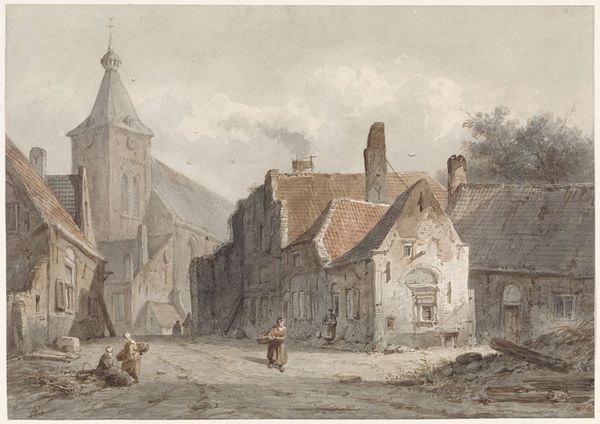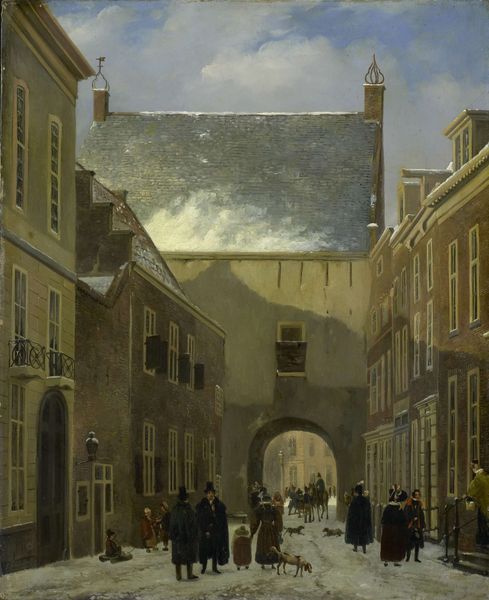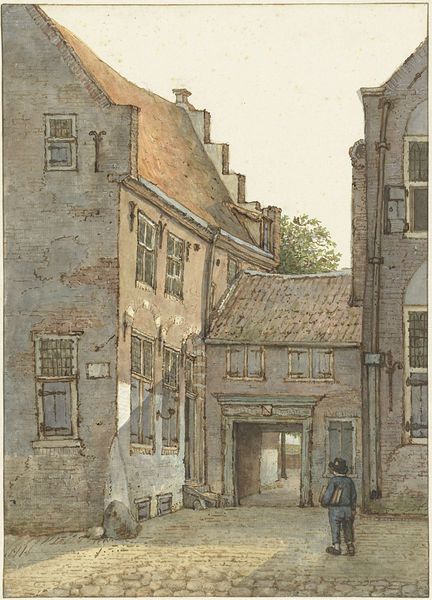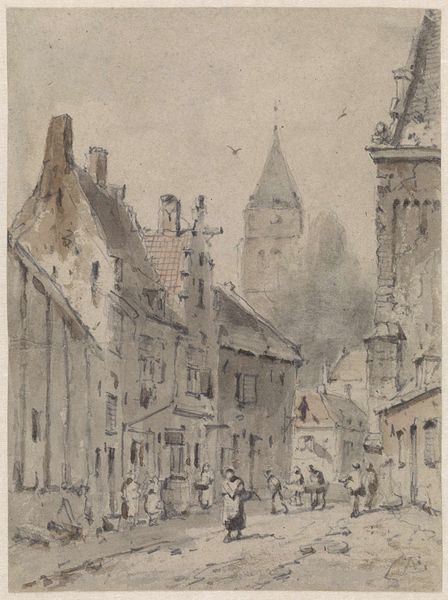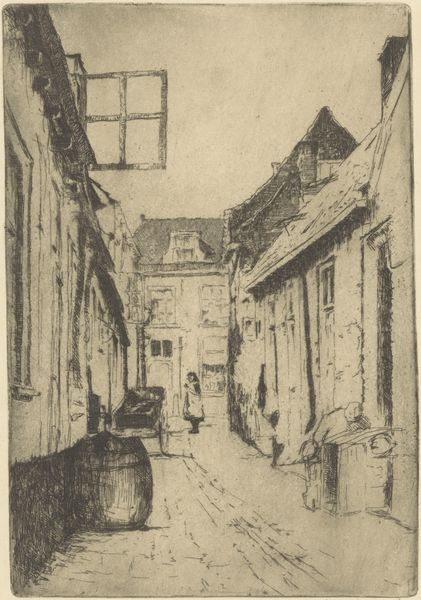
drawing, watercolor, pencil
#
drawing
#
impressionism
#
landscape
#
charcoal drawing
#
watercolor
#
coloured pencil
#
pencil
#
cityscape
#
watercolour illustration
#
genre-painting
#
watercolor
#
realism
Dimensions: height 432 mm, width 385 mm
Copyright: Rijks Museum: Open Domain
Curator: This drawing, residing here at the Rijksmuseum, is titled "Gezicht te Pünderich, aan de Mosel," created by Marinus van Raden in 1874 using pencil, watercolor, and coloured pencil. Quite a collection of media there. What catches your eye? Editor: The composition feels strangely melancholic. The muted tones, the narrow street perspective... it evokes a sense of timelessness and perhaps a subtle sense of confinement, a weight of history. Curator: Indeed. Consider the artist's materials. The mixed media is interesting here because these are relatively accessible mediums. This suggests the piece may have been created more directly from observation, out in the landscape itself, as opposed to highly controlled studio setting. Editor: I see that, yes. The arrangement of elements here tells a particular story. Notice how the eye is drawn down the street, past figures, livestock... all converging to some distant center, obscured from our view. What might this suggest about the town’s socio-economic structure? Curator: Pünderich's prosperity as a hub for wine production is symbolized by the figures carrying goods, possibly grapes or finished wine, towards this center. This reinforces Pünderich as an important wine-trading town in the Mosel region. Van Raden makes clever decisions regarding who and what is placed to represent it. Editor: Precisely! The buildings too—their aging facades, each unique doorway—carry so many collective memories, whispering of lives lived, generations sustained by this landscape, all anchored by labor related to wine production. Curator: I think the scale does something interesting as well. By choosing this sort of ordinary, working-class setting, van Raden suggests the labor required is something essential. The artist isn't idealizing the rural lifestyle here; he's recording its economic realities, even in its beautiful scenery. Editor: And what's really captured me are these animals that walk around unattended in the area where this manual labor and distribution is going on. I see their importance as almost cultural markers here, hinting towards folklore, local tradition... elements deeply interwoven within Pünderich's identity. Curator: These are just visual markers from a single street in a Mosel region town, yet, analyzing what has been drawn allows us to access such in depth insight of social and economic setting. Fascinating. Editor: Exactly, and recognizing its symbolic weight, we can dive a bit further to reveal an area brimming in symbolic activity.
Comments
No comments
Be the first to comment and join the conversation on the ultimate creative platform.

